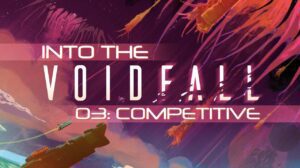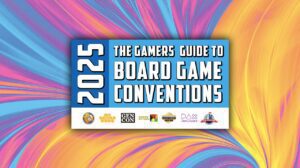Disclosure: Meeple Mountain received a free copy of this product in exchange for an honest, unbiased review. This review is not intended to be an endorsement.
When it comes to serious, heavier strategy board games, I typically chase my favorite designers.
Germán P. Millán is the designer of Sabika, Bitoku (and Bitoku’s fantastic expansion set Bitoku: Resutoran), and Men-Nefer. While some of those titles are divisive—even amongst our team, opinions vary greatly on Bitoku, for example—Millán’s titles usually feature exceptional production and a novel mechanic or two that keep me coming back for more plays. Of these titles, I think Men-Nefer is the best one…I loved the tactical nature of turn-taking in that game and the way turns offer flexibility as players take each of their nine turns per round to get so much done across a board that admittedly has too many action choices.
Millán makes heavy games. With Covenant (2025, Devir), Millán is back with a title that is actually a decent bit lighter and more approachable than Bitoku, Sabika and Men-Nefer. Covenant also has dwarves. There are a lot of good things to say about it, but the most shocking thing about it comes with its gameplay—there are no novel mechanics on display here.
Covenant, then, is “just” a very solid, well-produced Euro with interesting choices and a play time that firmly lands in the two hours-or-less range. In a market where there are hundreds of other choices, I think your best bet might be to buy any copy of Millán’s previous titles instead.

The Lord of the King’s Coins
Covenant is an action selection game for 1-4 players. (No, it is NOT a worker placement game, because each player has their own player board, with spaces where only their workers can go. In a traditional worker placement game, all players fight over a limited number of worker placement spaces to trigger actions, hopefully leading to a knife fight as everyone tries to claim the best spots. Covenant isn’t that game.)
As leaders of dwarven clans in a world that feels like it might belong to a Tolkien novel (in part, because the manual hints at just that), players have three Eras and 12 total turns to score the most “glory points”, or GPs. To do it, they’ll do things familiar to almost anyone who has played a medium-weight Euro over the last ten years—going to a mine to dig for resources, exploring a map of “hall” tiles to earn bonuses and later defeat minions, constructing buildings, and delivering resources to build monuments. (Like other Millán titles, players can score points for building things in Covenant, so even moving resources to a construction area here will garner GPs.)
There are private scoring objectives, a pre-game draft to acquire starting resources, ongoing player powers in the form of “Tradition” tokens, public/shared objectives that are scored at the end of each Era (and that stack, so some will score multiple times), and milestones that must be passed for personal objective tiles to even be scored. There are tracks, track bonuses, defeated monster bonuses, King’s Coin tokens that offer both instant bonuses and end-of-round bonuses, and personal player boards that grant even more bonuses when tool tiles are placed in one of the eight available spaces on the right-side of each board.
It sounds like a combo bonus bonanza, right? Well, not quite, at least not in my inadequate hands after three plays (solo, two-, and four-player games). That’s because the game’s main turn mechanic is tied to the strength of each player’s four dwarf tokens, one of which is used to kick off each turn by being placed on one of a player’s tool spaces, which trigger an action (dig, transport, build, skirmish).
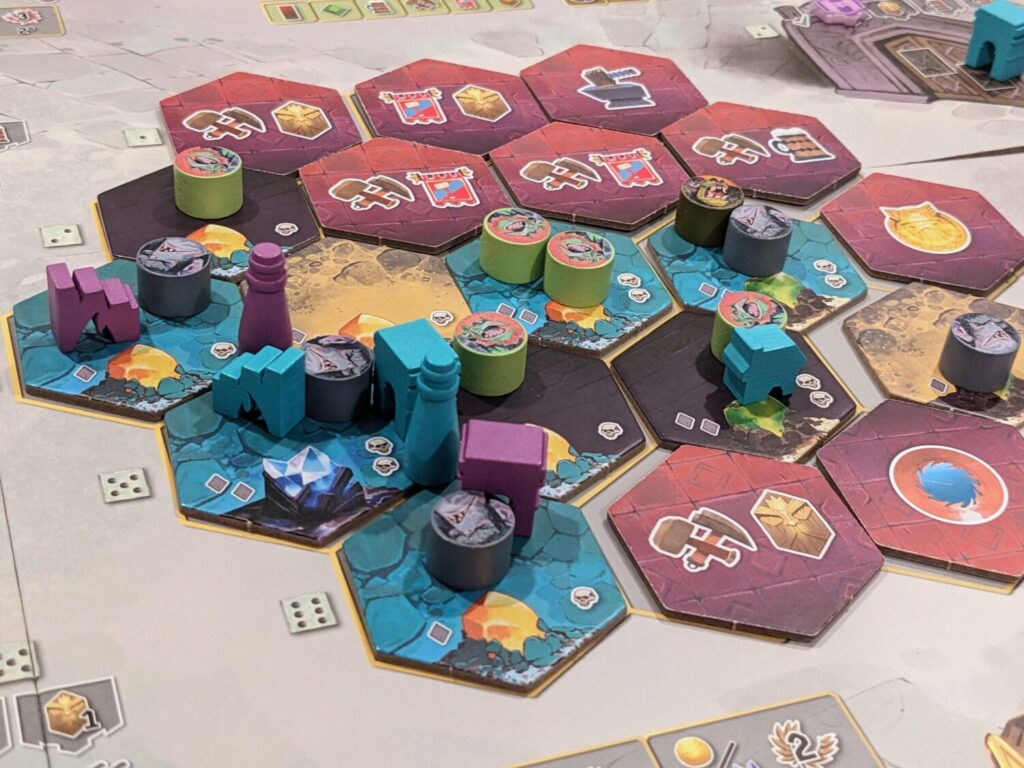
Each player has a stable of four dwarves that begin the game with a strength level of one. Using a mix of free upgrades and bonuses that can be found in various parts of the board, players can slowly boost the permanent strength of each dwarf, to a max of level four strength. A dwarf’s strength drives each of the game’s four main actions. Want to defeat a goblin on the main map of hall tiles? That will cost a strength of one. To defeat an orc or a troll, that requires a strength of two or three, respectively.
To deliver resources to the monument construction area, a dwarf with strength one can only deliver one resource. That might still be valuable, because some of the construction areas offer bonuses even with one resource delivery. But if you want to do anything really powerful in Covenant, you’re going to need stronger dwarves. (There is a way to temporarily boost the strength of a dwarf, by spending “support” tokens…tokens that feature an image of a pint of beer. I’m pretty sure it’s alcoholic beer, and not, say, root beer. Look, every dwarf is different!)
Dwarf strength neuters the Covenant experience, to a degree. This presents an incredible challenge, especially for new players; scoring even 75 points in your first few games will feel like you’ve climbed a mountain, because points don’t come easy here. Poor play is really going to show in your scores, so don’t be surprised if someone scores 50 points in your first game and that is enough to win.
That also tempered my overall experience with the game; it’s hard to find the wow moments in Covenant, especially in the game’s early turns.

It’s Good, Which Makes Things Tricky
During each of my games of Covenant, I had 2-3 turns where someone commented on the “wow” factor of their current turn—a cool combo, a play that sniped another player who was hunting to do the same action I took away, or a fun “this thing bumped me up two spaces on a track, which gave me a thing, which then got me another thing” sequence. And those moments, no matter what game we are talking about, are what I live for when it comes to the modern Euro. I want to take sexy turns. Sometimes, I don’t even care about winning…I just want to feel special, in a board game kind of way, a few times a night.
Covenant is competitive, but it was rare that a player found themselves unable to take the action they really wanted to take. Getting resources is generally pretty easy. There are usually enough monsters on the exploration map to capture and place in a player’s personal dungeon space, used for instant bonuses as well as end-of-round scoring. There’s plenty of room to transport goods that can be used to build monuments. Track bonuses are available everywhere. Multiple copies of the same tools seem to always be in the Forge space, where players will upgrade their player board to increase the variety of actions they can take each round.
And, Covenant comes in a package that can be described as simply fantastic. Like Men-Nefer, Sabika and Bitoku, the production here with Covenant is glorious. The dwarf token images are great, and I love the progression of the pictures from a level one dwarf to a level four dwarf. The main map/exploration board is usually a mess by the end of the game, but it’s easy to tell from afar who has buildings where. Tracks are easy to read, although the Mining track doesn’t clearly delineate the bonuses that can be earned by moving up that track (we clarified two questions with Millán himself during our review plays).
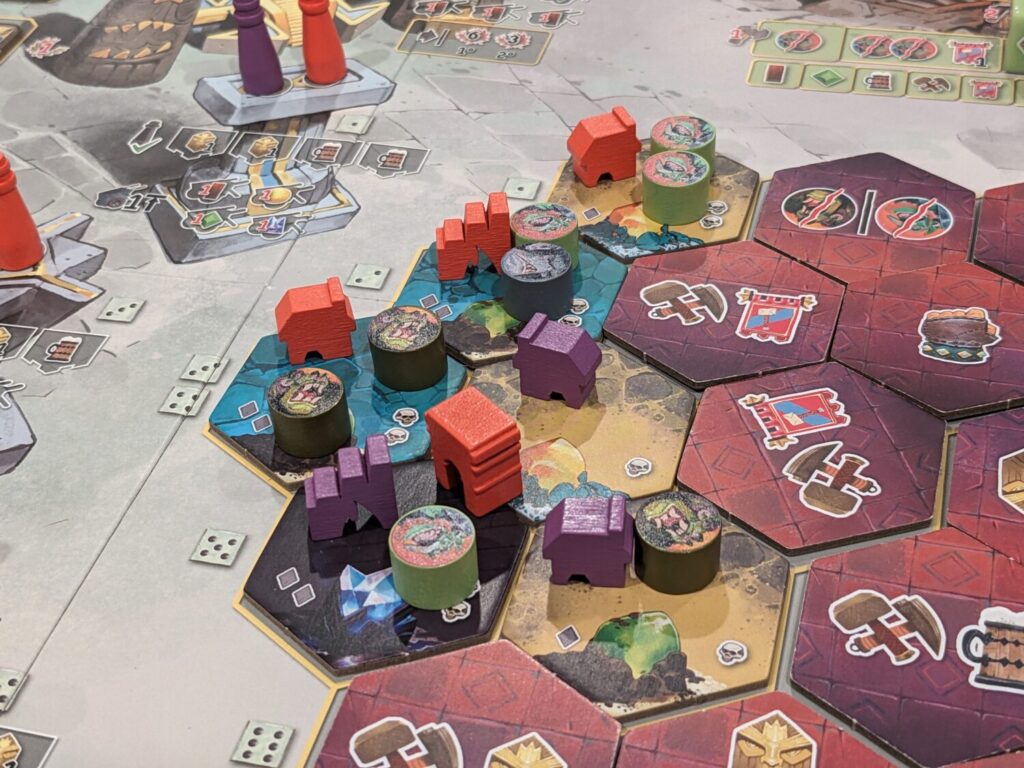
Almost everyone I know in the tabletop media space complains about Devir’s rulebooks…but, the Covenant rulebook might be their best work. Every action is clearly detailed, the glossary/appendix sections offer details on every token in the game, and examples are very clearly spelled out in every section of the rulebook. Look, I’m someone who actually didn’t complain about the much-maligned Transgalactica manual…but going from that to the Covenant rulebook, I was able to internalize the Covenant rule set after just two full readthroughs. For a game of this weight, that is a minor miracle.
Then Devir crushed the one thing that Men-Nefer’s publisher failed on…the menu-style player aid for Covenant is excellent. All the icons are there. A full description of the round structure and end-of-round scoring is there. The final scoring is there. A summary of the game’s actions is on the front cover. The best part? THERE ARE FOUR PLAYER AIDS, ONE FOR EACH PLAYER!! No splittsies, people! Everyone gets their own mini-menu!!
So, across the board, Covenant is good. I was hoping for something exceptional.
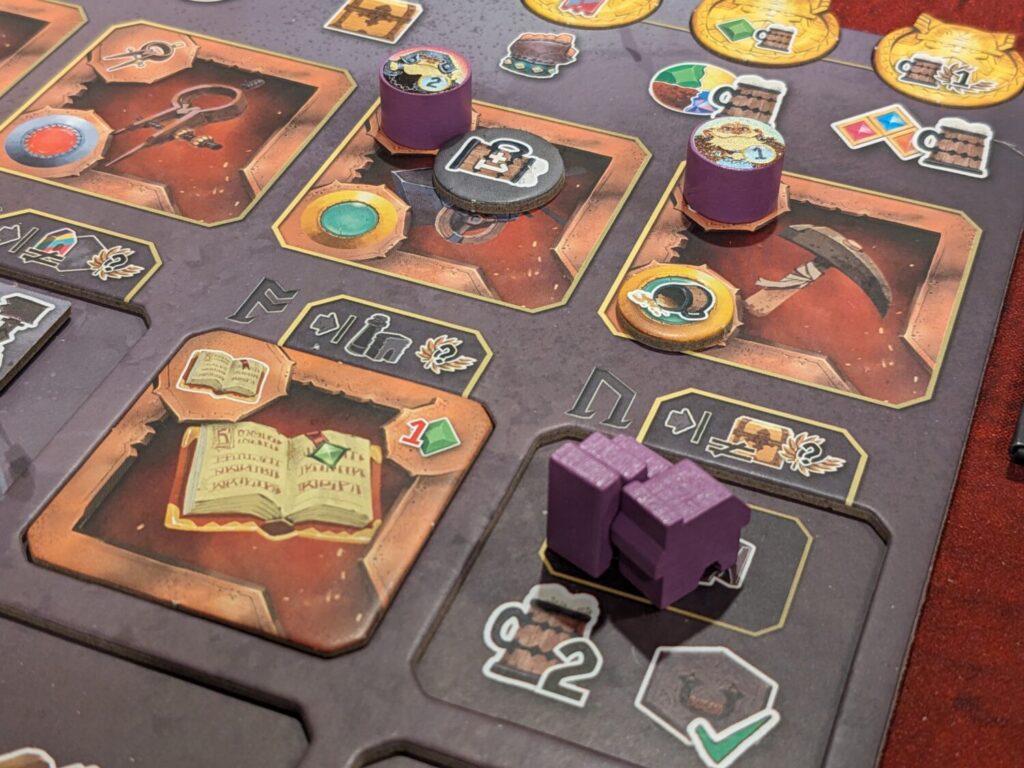
It’s a Novel You Know
Men-Nefer’s main turn action mechanic is…well, I think it is tabletop genius. The triple rondel used in Sabika is the reason to try it. Bitoku has a lot going on, but it comes in a package that I still think brings joy because it stands apart from other heavy Euros with a solid mix of hand management and getting your dice onto the board in just the right spots.
I’m not sure what I would call “novel” when it comes to the design of Covenant.
Lots of games have workers or worker actions that can slowly be upgraded to take stronger actions; from lesser-known games like Origins: First Builders to scions of the category such as the Daniele Tascini titles Tzolk’in: The Mayan Calendar and Teotihuacan: City of Gods, nothing about making a worker token a little stronger is getting the juices flowing at this point in my hobby career. Lots of games ask players to gather resources to build things, especially medium-weight Euros released in the last decade. Ongoing player powers are fun in Covenant, but most Euros have those now, too.
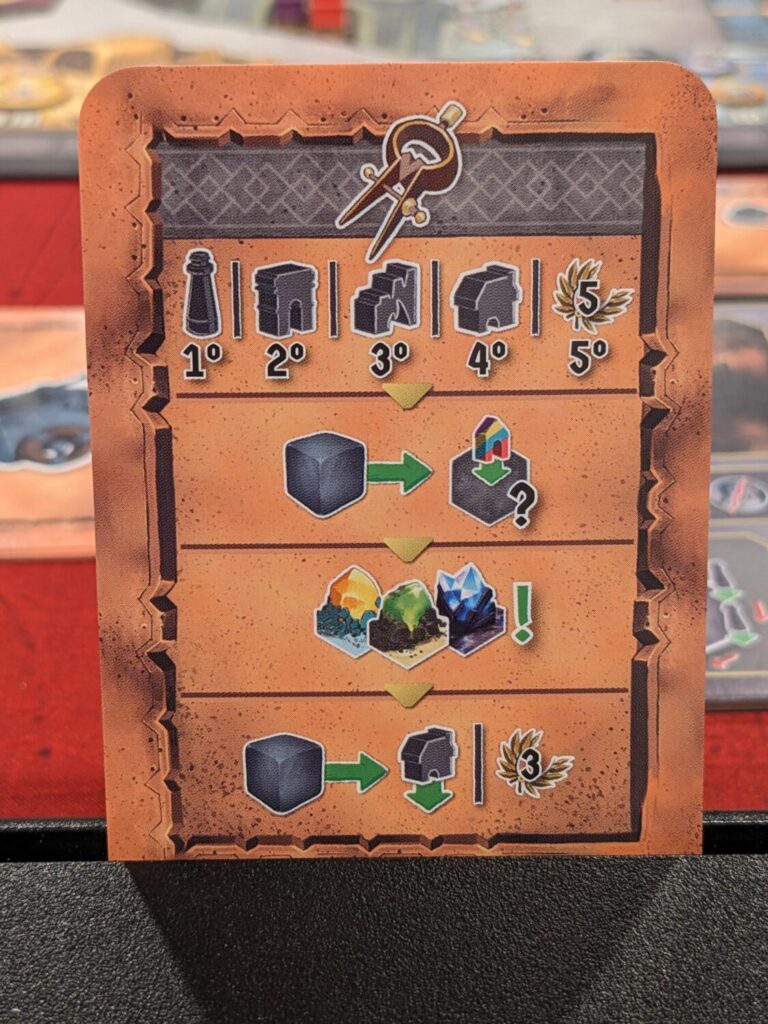
As a fan of Millán’s other work, I was hoping for something in Covenant that blew my mind. That leaves us with a still strong title, one driven by great production and stellar illustrations from artist Enrique Fernandez. Covenant is also a game that can be taught live in about 20 minutes and plays in about 30 minutes per player…for real. (I know, I know; other heavier Devir titles have stated playtimes that have spiraled out of control, but I am very happy to report that my four-player game of Covenant finished in two hours, which featured three players new to its systems.)
In 2025, I have played a LOT of solid, medium-weight Euro-style strategy games. Tianxia, Ayar: Children of the Sun, the Tiletum expansion Prospect for Silver, Endeavor: Deep Sea, Unconscious Mind…the list is long, folks. Covenant is a good time, but I think experienced strategy gamers will try this and move to other titles in short order. (However, if you are a fan of the theme, and you are, like me, a huge fan of the designer’s other works, you should give Covenant a spin. I get it—you are a completionist!)
My strong advice? Spend money on a Millán title, but try one of his other three better designs: Bitoku (with the Resutoran expansion), Sabika, or Men-Nefer. Millán remains a designer I will track closely, in the hopes that his next title lands a little higher on the list.






